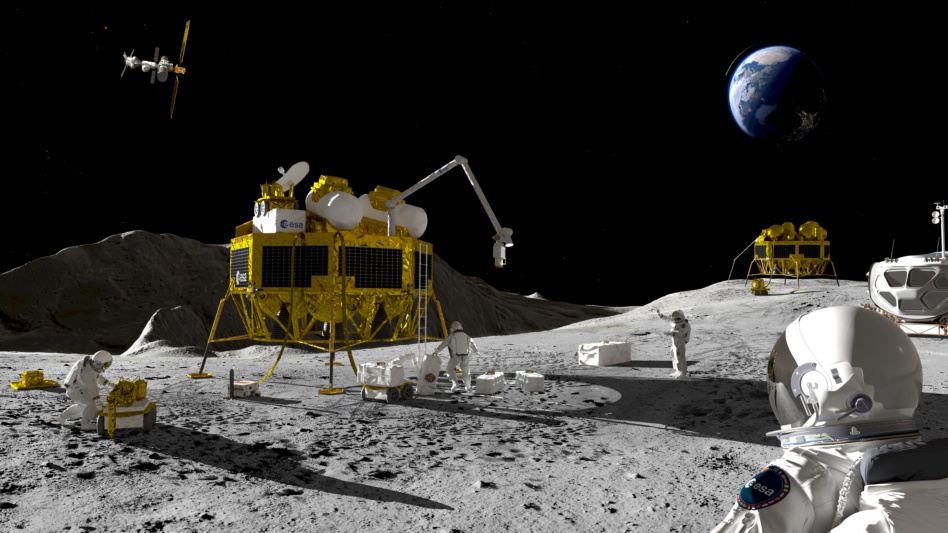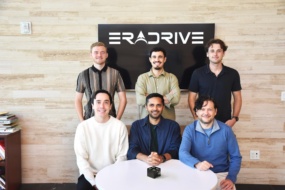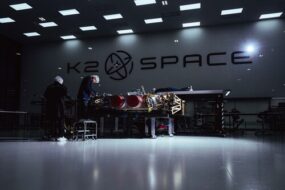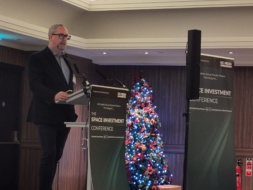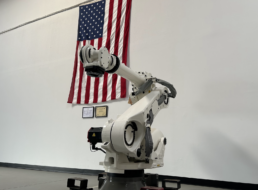The European Space Resources Innovation Center (ESRIC) announced the inaugural cohort of its Space Resources Accelerator, backing six companies developing tech to support humanity’s return to the Moon.
The companies all boast business models that don’t depend on reaching the lunar surface to generate revenue, though they represent sectors ranging from in-situ manufacturing to power generation. ESA has dedicated over €1M ($1.1M) to financing the cohort, but getting to the Moon will require much more private investment.
“We were careful in selecting companies and founders who share the same vision as ESA of being part of this journey in going to the Moon, but have a down to Earth approach when it comes to the business sense,” ESRIC’s business accelerator officer Alexander Godlewski told Payload.
Outsiders perspective: Interestingly, for an accelerator shooting for the Moon, one-third of this first cohort operates largely outside the space industry. It’s a sign that investors are beginning to see value in space companies without “space” in their name.
ESRIC, Space Resources Accelerator, NewSpace Capital, and others are throwing their weight behind companies that can solve the hardest technical problems in space, while cashing checks back home.
“Now there are companies that supply both to space and non-space industries. From the investor point of view that provides the diversification of the risk from different industries,” Bogdan Gogulan, NewSpace Capital CEO and managing partner, told Payload. “[It brings] the efficiency and the scale of terrestrial production and terrestrial industries into the space industry.”
Setting up shop: Two companies in the cohort are working on materials and manufacturing.
- Orbital Matter: The Polish startup focused on construction and additive manufacturing in microgravity plans to demonstrate its 3D printing technology on orbit as early as 2025—tech which could eventually enable in-situ manufacturing of lunar infrastructure.
- FibreCoat: The German startup producing metal-coated fibers for defense, automotive, and construction applications is looking to break into the space industry. FibreCoat’s technology, which helps shield electric vehicle computers from interference from their powerful batteries, will be adapted to protect satellites from harmful radiation and extreme temperatures.
Outside investment: FibreCoat announced a ~€20M ($21M) Series B round today, co-led by NewSpace Capital and Goose Capital. The company also added Martin Halliwell, a partner at NewSpace Capital, to its board of directors.
Together with the support from the Space Resources Accelerator, these funds will help expand production capabilities; enter new markets in the US, Japan, and India; and invest in R&D for space-based applications, according to CEO Robert Brüll.
As part of its bid to join the Space Resources Accelerator, FibreCoat pitched building launch pads and roads from lunar regolith, an idea the company tested last year on Earth.
“The whole idea is we need to transport less material to the Moon,” Brüll told Payload. “This approach of spinning fibers from regolith works…now the next step is: how can we get this onto the Moon?”
Keeping the lights on: Others in the cohort are offering different solutions to the multi-faceted problem of fuel and energy usage in the lunar arena.
- Orbit Fab UK: The London-based HQ of the US-led Orbit Fab group is developing gas stations in space and plans to adapt the technology to refuel satellites orbiting the Moon, as well as landers and rovers on the surface.
- Space Power: The UK startup is working on a power beaming technology. As part of the accelerator, the company is developing a plasma cleaning technology to mitigate lunar dust and maximize energy production.
- Volta Space Technologies: The Canadian startup is building a constellation of wireless power transmitting satellites and hopes to provide Moon missions and facilities with a reliable source of power.
- Maana Electric: The Luxembourg-based company takes a green approach to the production of silicon, cells, and solar panels. The company is just entering into the space market but proposed the idea of producing solar resources on the Moon.
